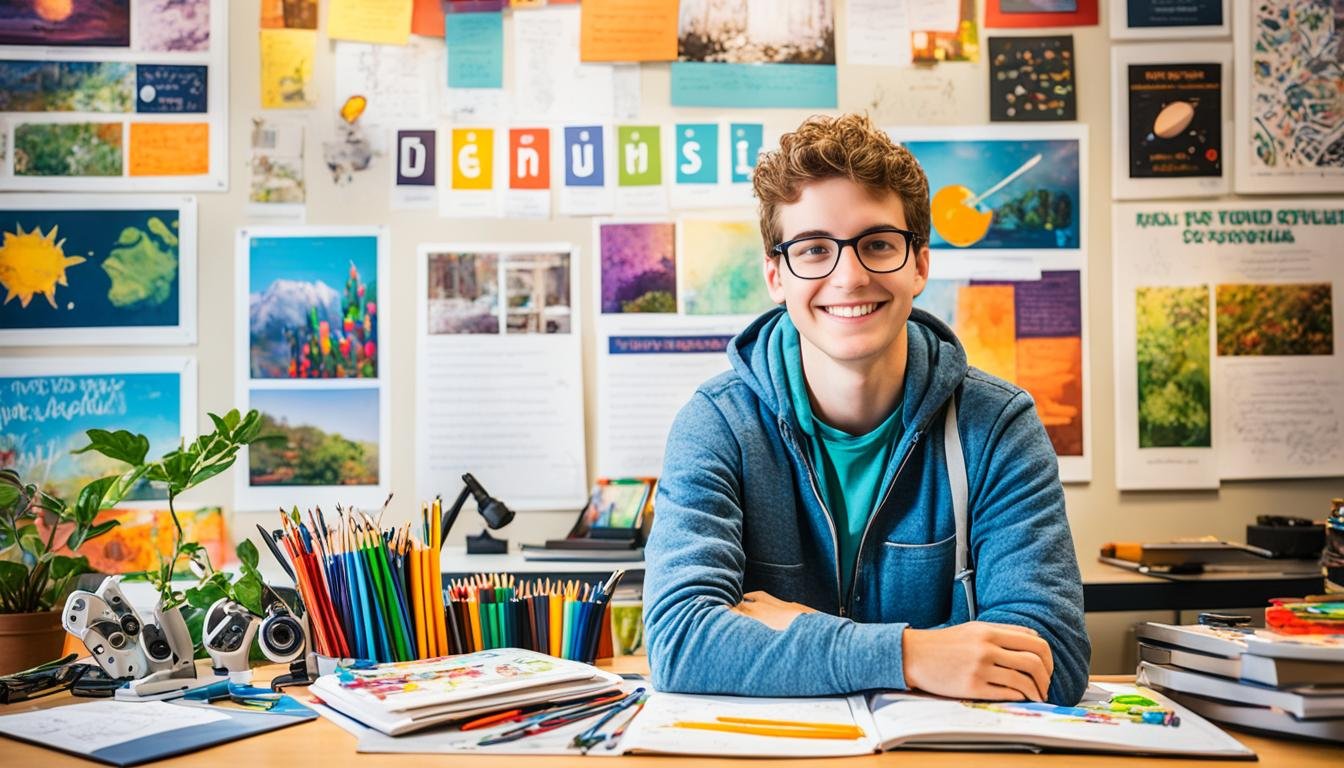Alternative Education Models
Ever think traditional schooling might not be the only path to success? It’s a good question to ask. Are there new ways of learning that could suit different people better?
Alternative education models are different approaches to learning. They are designed for each student’s specific needs and style of learning. This is in contrast to normal schooling, which often pushes everyone to be the same. These models, ranging from homeschooling to democratic schools, focus on developing creativity, thinking skills, and self-driven learning. They give students more control over how they learn.
In Europe, around World War One, new educational ideas started to pop up. This included methods like the Montessori and Waldorf methods, focused on personal, whole-child learning. Schools like the famous Summerhill School began to reject strict, uniform education. Instead, they valued the freedom for students to learn in their own ways.
Now, there are even more ways to learn outside the box. Schools like the Green School in Bali and the Reggio Emilia approach offer fresh perspectives. These places aim to make learning more engaging and adaptable for each individual.
Key Takeaways
- Alternative education models offer varied approaches like project-based, experiential, and self-directed learning.
- Personalized education targets the specific needs and abilities of each child, especially prominent in homeschooling.
- Innovative learning environments promote flexibility, creativity, and critical thinking.
- Models such as Montessori, Waldorf, and Reggio Emilia emphasize holistic and supportive learning communities.
- Alternative education fosters educational diversity, accommodating unique learning styles and pacing.
- Blended learning combines traditional teaching with online instruction for enhanced flexibility.
- Collaborative learning models enhance social interaction and communication skills among students.
Introduction to Alternative Education Models
Exploring the world of educational innovation shows us that old-school public education doesn’t fit all students. Some families bounce from place to place, mixing cultures and careers. They’re looking for education that fits their lifestyle better. This has brought about many alternative education models that are as unique as each student.
These alternative models focus on personalized learning, getting students ready for today’s complex world. It’s interesting to note that about 75% of kids in the U.S. don’t enjoy traditional schools. This shows the need for more varied educational methods.
Noteworthy universities like Worcester Polytechnic in the U.S., London Interdisciplinary in the UK, and Tomorrow in Germany are leading this change. They design their learning plans to be flexible and cover a wide range of topics.
There are also high schools, like Agora in the Netherlands and Green School in Indonesia & New Zealand, going this route. They focus on different learning methods, including students taking the lead in their learning. Schools like the School of Humanity, which mainly operates online, are embracing this too.
Alternative education isn’t a new idea. In the ’50s and ’60s, there were schools for students who hadn’t fit into regular schools. These schools achieved success by having less students in each class, with one teacher for every ten students. This helped lower skipping school and bad behavior, while making students more positive about learning and school in general.
| University | Location | Alternative Model |
|---|---|---|
| Worcester Polytechnic Institute | United States | Project-based learning |
| London Interdisciplinary School | United Kingdom | Interdisciplinary approach |
| Tomorrow University | Germany | Flexible, personalized curricula |
The range of alternative education models is vast. Some focus on getting students ready for specific jobs, while others aim for personal growth. Montessori schools and microschools are on the rise, showing that non-traditional education is here to stay. Plus, platforms like MIT’s Scratch and Khan Academy are making quality education more accessible. This, along with virtual schools using cutting-edge tech, is changing the face of education worldwide.
Homeschooling and Unschooling
The home-based education scene has grown a lot lately. This is especially true for homeschooling and unschooling. These methods make learning more personal for each student. They focus on the student’s unique needs. Let’s explore what makes homeschooling and unschooling special.
Homeschooling
Homeschooling comes in many forms, like classical and Montessori. This variety lets parents take more charge of how their kids learn. It’s great for families with busy, non-traditional jobs. It’s becoming more popular, with about 3.3% of kids in the U.S. being homeschooled.
Homeschooled kids often do better on tests than those in traditional schools. This success shows that tailor-made education works. Most parents choose this route because they worry about things like safety and negative peer pressure.
Unschooling
Unschooling is very different from normal school. It’s based on the idea that kids learn best on their own. Without a set curriculum, children can focus on what interests them. This approach is liked by 10-15% of homeschooling families and is becoming more popular.
It’s ideal for jobs that need creativity and critical thinking. For example, in technology and the arts. Research shows unschoolers really love learning and are self-motivated. The pandemic made unschooling even more popular, as people looked for different ways to educate.
Unschooling can be tough for parents, who have to find resources and guide their children. But, it also allows children to truly pursue their interests. This method lets kids have diverse and interesting learning experiences. Such experiences make them eager learners.
Innovative School Systems: Montessori, Waldorf, and Reggio Emilia
Innovative schools like Montessori, Waldorf, and Reggio Emilia focus on children’s needs. They offer unique ways for kids to learn. Each school type has its own special approach to education. These methods help kids grow in different ways and enjoy learning more.
Montessori Method
Dr. Maria Montessori started Montessori education in 1907. This type of school lets kids lead their learning. It uses hands-on activities to help kids grow both mentally and emotionally.
Montessori teachers guide children as they learn at their own pace. They help students become good at relating to others. The school environment is quiet and lets kids work on what they like for a long time.
| School | Number of Students |
|---|---|
| Bond Academy | 312 |
| Hudson College | 440 |
| Kingsway College School | 480 |
| Bayview Glen | 1,130 |
| St. Mildred’s-Lightbourn School | 550 |
| Westmont Montessori School | 290 |
| Westside Montessori School | 155 |
Waldorf Education
Waldorf schools, based on Rudolf Steiner’s ideas, focus on the whole child. They mix traditional learning with art. This way, kids learn to think creatively and deeply.
These schools aim to foster a love of learning that lasts a lifetime. The Waldorf approach is used in many countries. It encourages kids to work together and be curious, helping them learn in fun ways.
| Country | Number of Schools |
|---|---|
| United States | 800+ |
| Canada | 140 |
| Worldwide | 5,000+ |
Reggio Emilia Approach
The Reggio Emilia approach comes from post-WWII Italy. It sees children as strong, curious learners. They learn by doing projects and through real experiences.
This method says the environment is like a teacher. It encourages kids to ask questions and work together. Reggio Emilia schools make learning exciting and encourage children to explore deeply.
Democratic Schools and Self-Directed Learning
Since over 100 years, schools based on democratic and self-directed education have existed. AS Neill’s Summerhill School, in Suffolk, England, is the world’s oldest democratic school, founded in 1921. Another good example is Sands School in Devon, UK, which started in 1987. These schools let students take charge of their education and how the school is run.
Democratic Schools
In democratic schools, both students and staff are considered equals. Adults are called facilitators. Students choose what to learn and how the school is run. This way of learning is about letting students lead their own education. Schools like Sudbury Valley School in the US follow this idea, too.
These schools let students skip conventional classes and testing. They provide an atmosphere that supports everyone’s learning needs. They make decisions together, often using a majority vote system. Some schools even use sociocracy, which aims to get everyone’s consent for decisions.
Self-Directed Learning
With self-directed education, students learn to manage their own learning. They pick what, how, when, and where to learn. This model helps students become more interested and responsible in their education.
Places like Alpine Valley School in Denver Metro support this learning style. They encourage freedom, community, and social responsibility. These schools create a caring environment for self-directed education.
| School | Location | Year Founded | Age Range | Educational Approach |
|---|---|---|---|---|
| Summerhill School | Suffolk, England | 1921 | 5-18 | Democratic Education |
| Sands School | Devon, UK | 1987 | 11-17 | Democratic Education |
| Alpine Valley School | Denver Metro, USA | 1997 | 5-18 | Sudbury Model |
| Houston Sudbury School | Houston, USA | — | 5-18 | Self-Directed Learning |
| Blue Bridge School | Grand Rapids, MI, USA | — | — | Self-Directed Learning |
These schools, located in different parts of the world, have different styles like unschooling and agile learning. They focus on respectful communication and gentle parenting. These environments promote self-management, play, democracy, inclusiveness, and holistic education.
Conclusion
Today, we see a big change in how we think about education. Different types of schools are being recognized for helping all kinds of students learn. For example, Montessori and Waldorf schools focus on doing things with your hands and on growing as a whole person.
Project-Based Learning (PBL) helps students think critically by working on real projects. Homeschooling and unschooling allow kids and their families to set their own pace and explore what interests them. This offers freedom that traditional schools may not.
Democratic education lets students be in control of their learning, which is very empowering. Online and blended learning use the latest tech to make learning fit into our fast-paced world. In the U.S., over 10,000 alternative schools cater to over 646,500 students. These schools are praised for making students attend more, behave better, and feel better about themselves.
Experts say these schools are especially good at helping students who might be more at risk. They help them stay in school and do well. Even though we need more proof that these methods work for everyone, the success stories show that they are worth investing in.
Looking ahead, we must support these new ways of learning. They aim to create students who are ready for the world, smart, and eager to learn. Encouraging these unique paths is key to building a better future for education.
Source Links
- Class Action: 11 models of alternative education worth studying
- A Map of the Alternative Education Landscape – Education Revolution – Alternative Education Resource Organization
- 🌟 Exploring Alternative Education Models: Shaping a New Era of Learning 📚
- Alternative models of education: a guide for parents – School of Humanity
- Alternative Schooling – National Dropout Prevention Center
- 11 Alternative School Models We Love: Which One Is Right For Your Kid? – renegadeEducator
- 8 Homeschool Types: Classical, Charlotte Mason, Unschooling and More!
- Exploring Alternative Education Models: Homeschooling and Unschooling
- No title found
- Montessori, Waldorf, and Reggio Emilia: A Comparative Analysis of Alternative Models of Early Childhood Education – International Journal of Early Childhood
- Montessori, Waldorf and Reggio Emilia: a comparison of philosophies
- Waldorf, Montessori, and Reggio Emilia
- Democratic and Self-Directed Education – Progressive Education
- Schools | Alliance for Self-Directed Education
- SDE Communities | Alliance for Self-Directed Education
- Exploring Alternative Education Models and Approaches







